Artificial intelligence is undoubtedly changing the way we experience and interact with technology. From watching TV to accessing remote financial and medical services, AI seems to be everywhere, and UX design is no exception.
There’s no denying that Artificial Intelligence (AI) is now everywhere. And we do mean EVERYWHERE! Long gone are the days when you had to call customer service and spend hours on the phone waiting for someone to answer. Or when going to the bank meant spending countless hours in line. In fact, it seems possible to clearly discern how life was before and after AI. Before the creation and widespread adoption of artificial intelligence, our world was primarily driven by human labor and manual processes, which was fine; we didn’t know better, out of sight, out of mind, right? Some might not even remember how most tasks, such as refunds and risk assessment, which are now fully automated, were performed by humans at a slower pace and with a higher margin of error. In other words, the world before AI was languid. Technology was extremely limited, there was a smaller amount of data available for analysis, and we had to rely solely on human effort and intuition to drive change. But now? Now, AI has revolutionized how we interact with technology, and its impact on how we build and use mobile applications is undeniable. As a result, modern app developers are now almost obliged to use AI in UX design and leverage the technology’s capabilities to build the mobile and software products of the present and the future.
There’s simply no way around it; AI algorithms and technologies are becoming non-negotiable in the operations of modern businesses worldwide. They are now somewhat essential for app developers to enhance the user experience of their products in various ways, some of which we will discuss in this article. So let’s get started.

The role of AI in UX design
Gone are the days when application design was solely based on color palettes, excellent graphics, and awesome fonts. Now, we have UX/UI designers capable of researching user behavior and deriving insights from it that shape and create unique interfaces between humans and technology. So, it makes sense that modern UX design should become highly reliant on the data we humans generate daily, and how else can we process that data and leverage its insights to drive UX design? You guessed it: AI!
Artificial intelligence is one of this generation’s most significant app development trends, and it is one of the fastest-growing technologies of the past few years. Its market size has increased from $93.5 billion in 2021 to reach a whopping $136.6 billion in 2022, figures that will likely keep growing in the following years. This rapidly growing universe that is AI, is changing everything. From how we access healthcare and financial services to how we live and interact with technology, AI has brought a new scope to what we can accomplish online. And app development is no different.
In app development in general, and the field of user experience design in particular, AI has already started to shake things up. It has begun to allow UX designers to create more inclusive, personalized experiences and deliver more intuitive and efficient designs. In fact, research shows that today, 77% of our devices feature at least one form of AI, which implies that its pervasiveness in mobile technology is already palpable. And rightfully so, AI systems are way ahead of humans in terms of data gathering, analysis, categorization, structuring, and display. They can also help UX designers speed up lengthy decision-making processes and provide actionable insights fast, which is priceless for expediting the data gathering, user research, and journey mapping processes. Moreover, developers and designers can train most modern AI systems to perform repetitive tasks in a fast and efficient way, freeing developers to focus on more complex endeavors that require human input.
So, in light of how artificial intelligence is becoming essential for app development and our lives in general, we think it’s interesting to analyze how AI can impact app development and how it is helping UX designers create better user experiences. Here are the main ways AI impacts your app’s user experience.

AI enhances data processing
You’ve probably heard these expressions: “data is the new gold.” or “data is the new oil.” Well, like gold or oil, which have both been highly valued and coveted by nations for years, data is now lusted after and seen as an invaluable resource. Just like gold and oil, data can currently be mined, refined, and used to drive business initiatives and generate insights and wealth. However, while that may be true, valuable data is not easy to come by, and its gathering and processing are both often tricky and expensive tasks. What’s more, data is usually only practical with the correct processing and insight gathering that stems from its analysis, and for UX design, these insights are priceless. Here’s where AI comes into play.
For UX design, data is everything. We need it to identify and understand our users’ behaviors, preferences, and needs to create experiences that are driven by valuable insights rather than assumptions and guesswork. However, to get to that point, we need data processing, and AI’s capabilities for data processing and analytics are undeniable. For one, these capabilities and AI-powered algorithms can be used to quickly gather and analyze data from sources such as social media, surveys, website analytics, and historical feedback. Then, UX designers can use these insights to reveal patterns, understand user behavior and preferences, map user journeys, write user personas, and inform all aspects of the UX design process.
Secondly, we can train AI systems to perform repetitive but crucial qualitative data-gathering tasks such as creating questionnaires and surveys or analyzing historical data to make predictions about user behavior and any potential changes in it so designers can respond accordingly. Or, for more advanced capabilities, Designers and developers can also train AI systems to respond to users’ needs in real-time and read them to do qualitative data analysis, which ensures data insights are highly accurate. Finally, AI can also identify patterns and trends that humans would have trouble seeing, helping UX designers make data-driven decisions effortlessly.
Gathering and analyzing data and using it to identify user behaviors and drive UX design decisions is by no means new. However, getting actionable insights from those data points and getting them fast enough to remain competitive is where it gets tricky. Analyzing the vast pools of data isn’t just challenging and time-consuming; it’s also extremely expensive. So, leveraging AI to help with that extensive task can not only help UX designers automate the most tedious tasks, but it can also help them weigh their designs against actionable insights to make sure their users’ needs and expectations are always met.
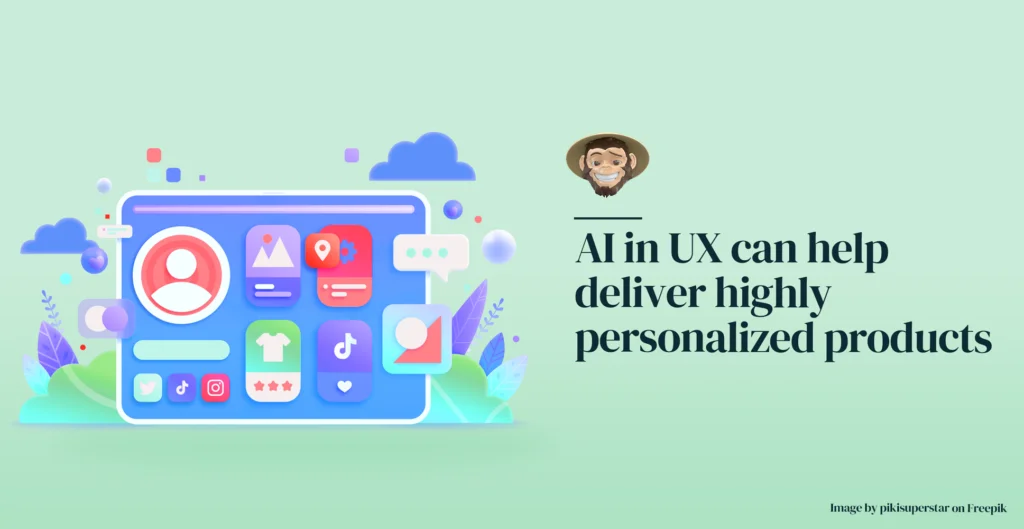
AI in UX can help deliver highly personalized products
Let’s face it; generic, one-size-fits-all applications are becoming obsolete fast. Instead, we all want unique products made just for us. Of course, it’s nearly impossible to create different applications for each of your users. Still, it’s certainly not impossible to take the same application and make elements of it unique enough to satisfy each one of them. Yes, it sounds obvious; after all, personalization is nothing new; however, what AI can do to help UX designers create more personalized UXs is.
Since AI is currently the only really accessible, somewhat affordable way of going through monumental amounts of data in a short time, it is the most powerful, effective tool for UX designers to create highly customized user experiences.
In that sense, AI can:
Read and analyze behavioral data to adapt your app’s interface to fit the needs of those accessing it, ensuring that your product gives each user the most relevant information.
Analyze users’ behavioral data to identify patterns and make predictions regarding their preferences to give you relevant insight to create more tailored and relevant experiences.
Target users’ real-time data and behaviors, such as current location, to deliver immediate information, allowing you to adjust certain elements and give them unique experiences.
These and more AI capabilities can give you priceless insight into what each individual user may find relevant and teach you how and when to give it to them. In that sense, these analytical AI systems are becoming more essential than ever. As you already know, US designers are not the final users of the products they create. So, thanks to AI, they now don’t have to guess what users want. Now, they can be sure about what their users are looking for and know how to give it to them. As a result, UX designers can create compelling designs, engaging and intuitive interfaces, and one-of-a-kind user experiences that make their products unique, innovative, and highly customized.
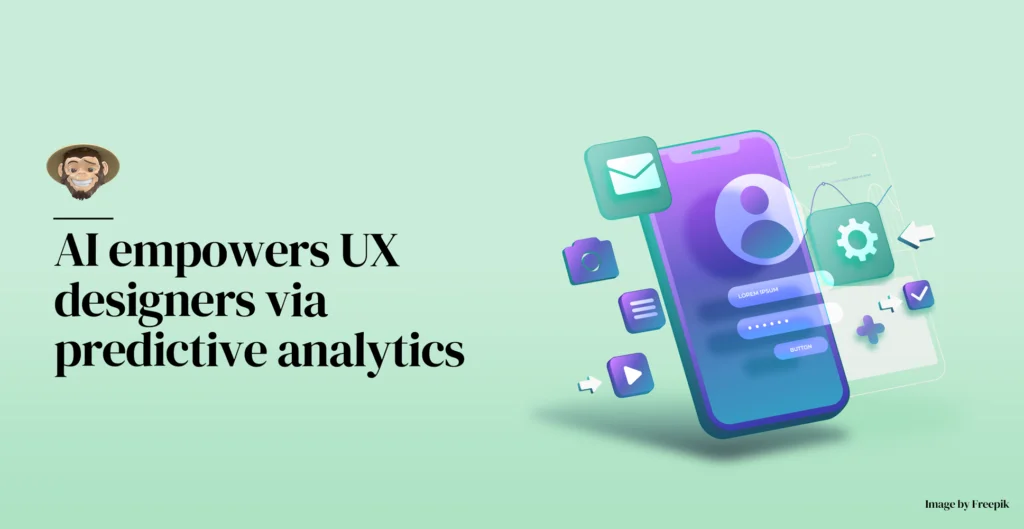
AI empowers UX designers via predictive analytics
A few years ago, thinking about using computer programs to predict people’s behaviors through data sounded like something taken from a SciFi movie. Now, however, thanks to predictive analytics, it is a reality. Modern AI systems can now use statistical models and sophisticated machine learning algorithms to evaluate historical data and use it to make highly accurate predictions about future events, which is like a godsent for UX design because it opens avenues for:
Highly accurate predictions: AI systems can use algorithms to analyze user data and predict what they will do or want next in their in-app experience. As a result, UX designers can anticipate these changing needs and build more responsive interfaces.
Faster and better user segmentation: AI systems can be trained to analyze user data and segment them into groups based on their needs, preferences, and behaviors so UX designers can easily create tailored experiences for each segment.
Predicting user engagement and churn rates: AI’s predictive analysis capabilities allow it to predict which users are likely to adopt and which are like to abandon your app. Thank to this information, UX designers can create specific designs and targeted interventions to prevent users from uninstalling your app.
Predictive analytics has been around for a while. Its market was estimated at $10.5 billion in 2021 and should grow to reach $28 billion in the next five years, which means it’s undoubtedly becoming popular. In fact, Internet giants such as Google and Amazon already leverage the benefits of predictive analytics to analyze their pools of accumulated data and derive predictive insights from it. That’s how they always seem to be one step ahead in offering personalized recommendations, and that’s another innovative way you can use AI in UX design.
So, even though AI’s predictive analytics and their adoption in app development and UX practices aren’t currently widespread, this year, we’ll likely start seeing them drive UX/UI design to allow mobile and software products to reach new levels of personalization.
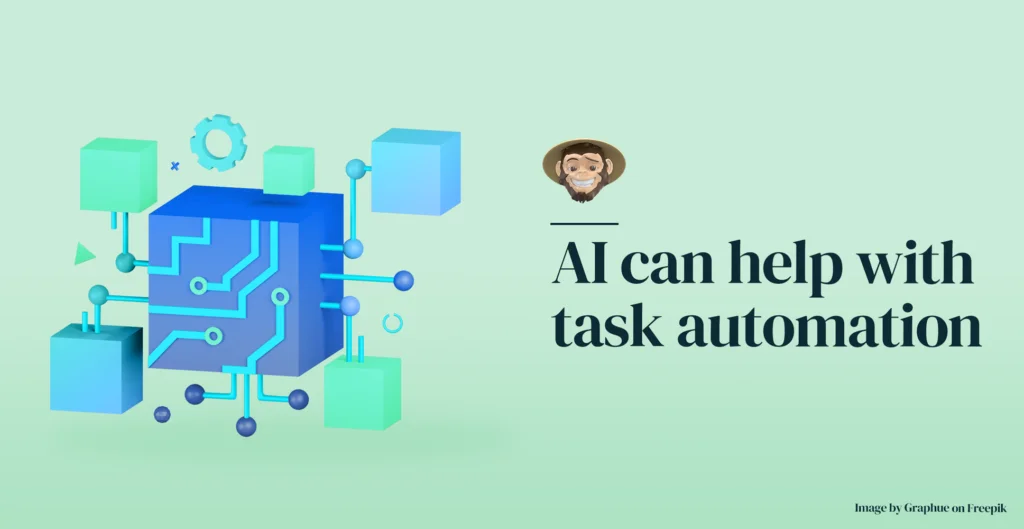
AI can help with task automation
Historically, UX designers have performed most, if not all, of the tasks related to the design process manually. They have always conducted research, mapped out user journeys, created prototypes and sketches, and charted architectures and flows themselves without complaining. However, some of these processes are incredibly time-consuming, and their deliverables, namely mockups and wireframes, can take weeks, if not months, to complete. And, as you probably already know, the development process can’t continue until most of the UX design process is complete, which puts a lot of pressure on the UX designers.
Luckily, AI systems can provide a significant level of automation that help both UX designers and app developers optimize routine and time-consuming but essential processes such as:
Usability-testing: By using AI-powered tools to collect both qualitative and quantitative user data, you can efficiently and automatically amass information such as usability levels, clickstream data, pain points, heat maps, and eye-tracking. You can also test on broader user groups in significantly shorter periods, which ultimately can give better insights. As a result, you can substantially reduce the time and effort it takes to identify issues, create feedback and validation cycles, and ultimately address issues sooner, saving you from wasting valuable resources.
Wireframing: Thanks to their ability to predict and analyze users’ behavioral data, AI-powered tools can use information in demographics, age, and device type to accurately determine how different wireframes would perform under different circumstances and how users might respond to various aspects of the app’s UX design. AI can also be trained to detect visual design issues, glitches, and inconsistencies, helping designers address potential design and performance issues sooner. As a result, UX designers have more insights they can use to deliver more accurate, fast, and cost-effective wireframes and thus improve the design and usability of their products in half the time (or less).
A/B testing: UX designers can also leverage AI’s capabilities to automate the A/B testing process, allowing you to compare two different versions of your design to determine which one is more effective. You can use AI algorithms to identify the design variation that performs best without the need for manual intervention, helping you save time and resources and focus on other creative aspects of UX design that do require human input.
Virtual testing: Virtual testing is an innovative AI-powered way of simulating user interactions with your app without actual, real-life physical users. It helps test your product and identify potential issues faster without expensive real-world testing.
An excellent example of how automated UX design processes work is Airbnb. In an article, the hospitality giant’s Design Technology Lead, Benjamin Wilkins, and Jon Gold, Design Technologist, illustrated how they design low-fidelity sketches and high-fidelity mockups in real-time by leveraging specialized camera equipment and software. In addition, they’ve developed an AI system that can recognize hand-drawn patterns and automatically render them into viable source code. In other words, it takes drawn sketches and ideas and literally turns them into actual products almost instantaneously!
AI has the potential to efficiently optimize countless processes in UX design that would otherwise take months. As a result, it can have a transformative effect on app development practices worldwide and can be a priceless asset in streamlining how UX designers and dev teams work.
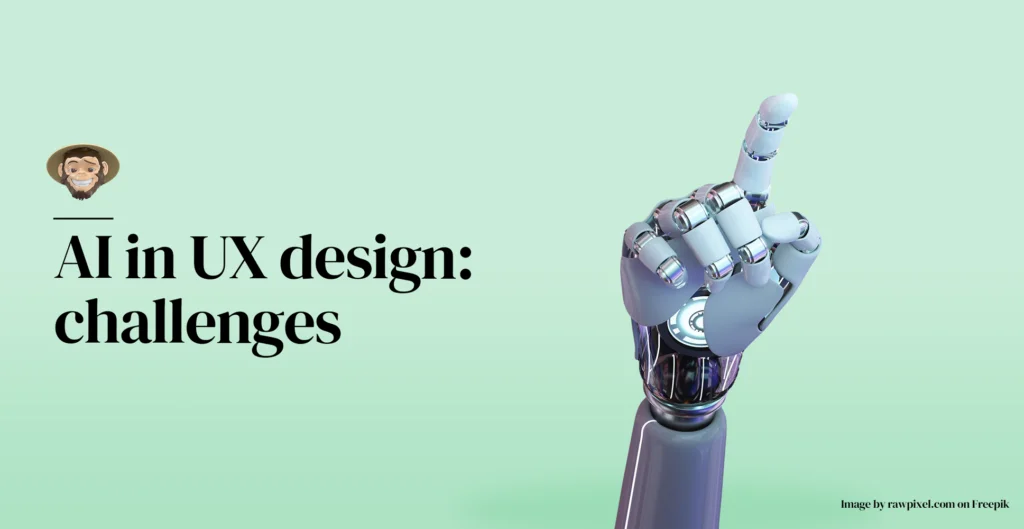
AI in UX design: challenges
As you can see, AI in UX design has unlimited potential. From enhancing user experiences by improving personalization, predicting behaviors, and providing tailored recommendations to enforcing automation and reducing testing times, AI is arguably one of the most promising technologies in the future of UX design and app development. However, some challenges must be considered and, hopefully, addressed soon so that in the future (hopefully the near future), we can successfully integrate AI in most UX design practices in the future (hopefully the near future). Some of these challenges are:
Integration complications: Integrating AI systems and tools, especially the most sophisticated ones, with existing UX design programs can be challenging, expensive, and time-consuming. Integrating robust AI capabilities into existing workflows and technologies requires significant effort. And, if these existing systems are outdated, the integration process can be not only expensive but also sluggish.
Data availability: As we already discussed, for AI tools to work correctly, they require not only require significant amounts of data, but that said data is high-quality information. These high-quality data amounts aren’t easy to come by and, in some cases, can be expensive. Not only that, but the data must be relevant and project-specific to avoid biased, discriminatory insights that can ultimately become useless for good UX design.
Privacy and ethical concerns: While using user data to provide certain levels of personalization is nothing new, the “hyper-personalization” proposed by AI systems goes one step further and uses more sensitive, highly specific data to deliver the insights we need. As a result, concerns are raised about data security and the loss of privacy. So, UX designers must ensure that the data they use is collected ethically and provides legal and appropriate levels of privacy to protect users.
Talent pool gaps: Using AI-powered tools in UX design is relatively new. These technologies also evolve rapidly, so there’s always a learning curve. As a result, designers with the necessary skills and experience to work with AI technologies effectively and know precisely how to program, train, and apply them to UX design may be hard to come by.
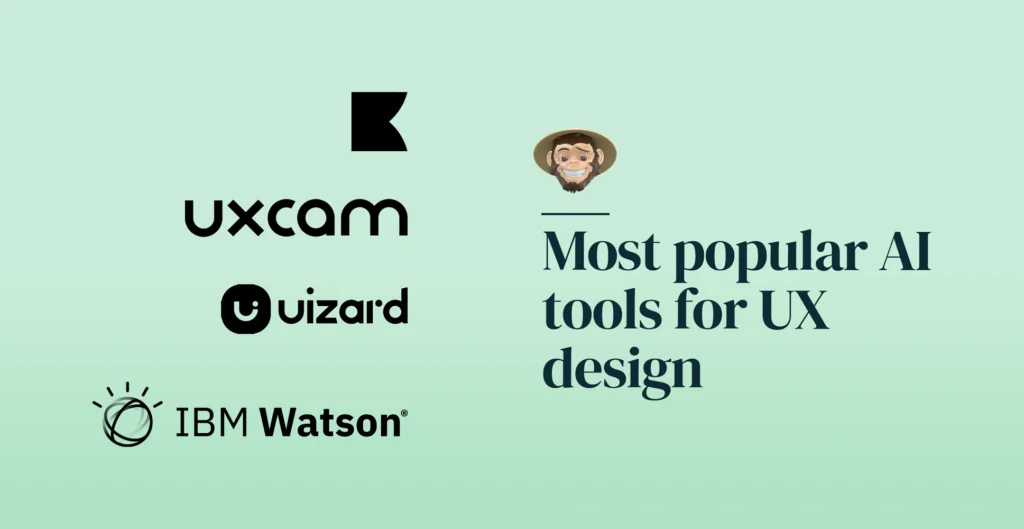
Most popular AI tools for UX design
There are currently a lot of affordable and accessible AI tools that can improve UX design-related processes. They range from simple personalization tools and color generators to more complex data processors and design automation platforms. Here are some of the most used AI-powered tools for UX design:
Khroma: Khroma is an AI-powered UX design color tool that helps users create color palettes and combinations. It uses machine learning and neural network algorithms to learn and predict patterns and generate color combinations that are aesthetically pleasing and are based on the user’s preferences.
UXCam: UXCam is an AI-powered UX analytics platform that provides insights into how users interact with their software and mobile applications. It analyzes user behavior and tells you how your users navigate your product so you can understand their journey and plan accordingly.
Uizard: Uizard is an AI-powered UX design tool that uses machine learning algorithms to generate digital wireframes and mockups based on a user’s manual sketches. Due to its simplicity, Uizard is an excellent tool for users with little to no experience in UX design.
IBM Watson Studio: IBM Watson Studio is an AI-powered platform that provides data analysis and visualization tools for businesses. While IBM Watson Studio is primarily aimed at data scientists, it offers some very robust features that can help UX designers to extract valuable and actionable insights from user data.
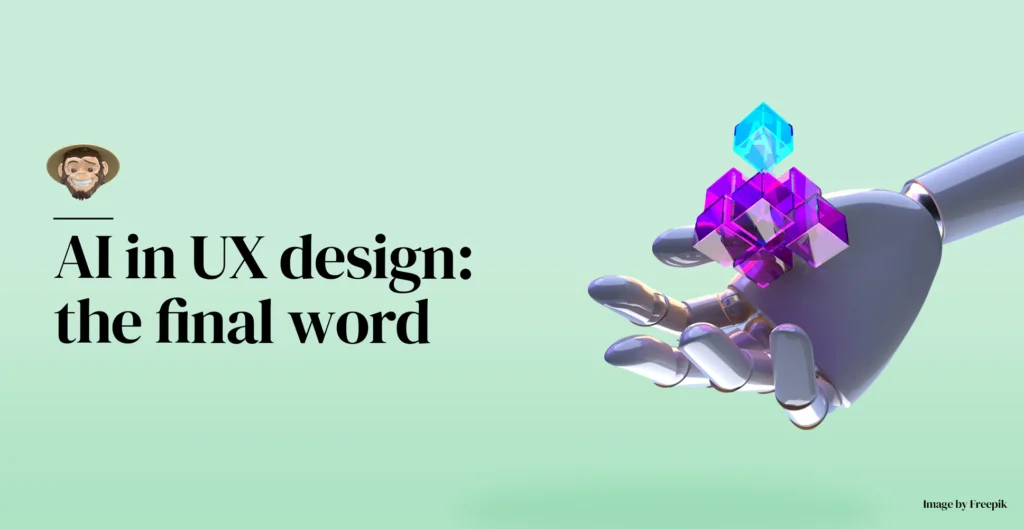
AI in UX design: the final word
A few years ago, using AI for automation and swift data insights was a distant dream. Now, however, AI is becoming increasingly relevant and accessible, and its impact on UX design is now somewhat significant as more development companies are leveraging its capabilities to power their processes. Of course, AI’s widespread adoption is still a ways away, mainly because, regarding availability and affordability, AI technology is still in its youth. Still, we can confidently say that its use and impact on user experience design will likely grow exponentially in the coming years. In the meantime, UX designers and developers can start using any AI tools they can access and understand how to use them to enhance their apps’ usability, user experience, and engagement rates. As a result, UX designers will become more adept at leveraging AI-powered technologies to develop applications with more intuitive and efficient designs that not only promote hyper-personalization, which is now a necessity but also raise the bar on what outstanding user experiences should be.
Have any further questions about AI in UX design? Want to work with us? Need help with any other matter that you consider we can help you with? Drop us a line, and we’ll get in touch ASAP!
